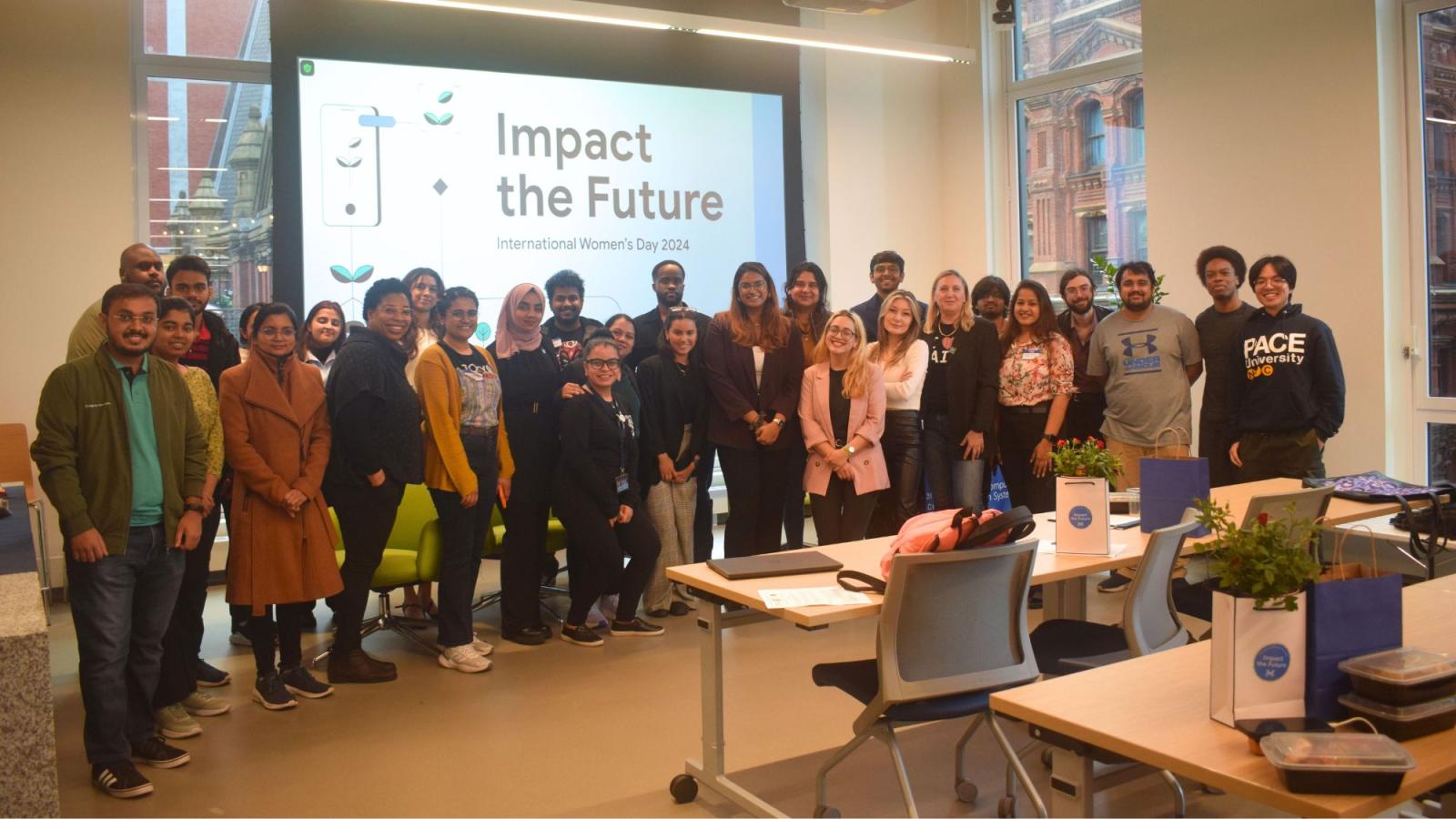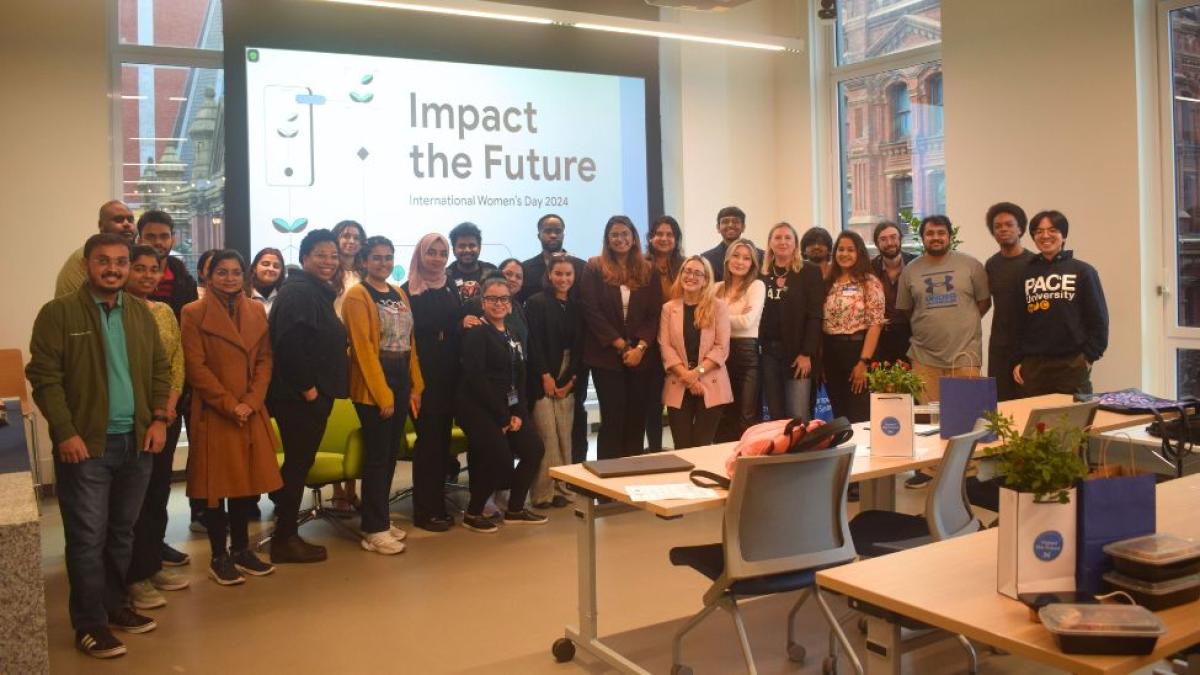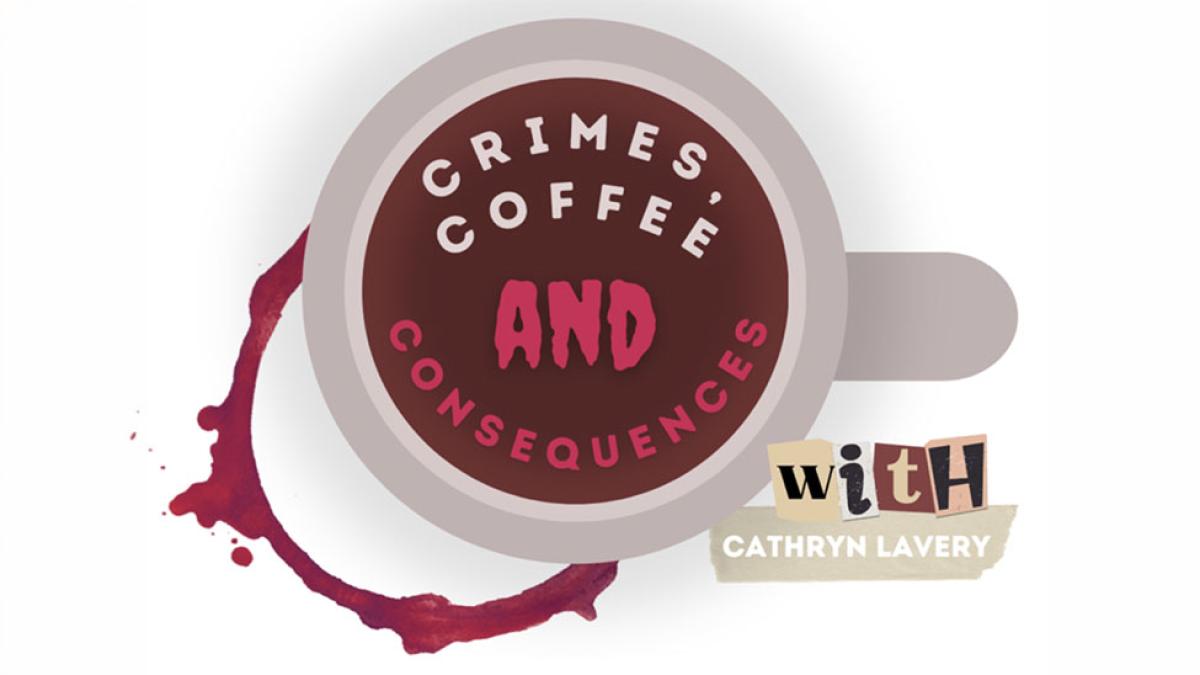The Cooper: Crafting the Soul of the Cask
The trailer for 2024 PaceDocs documentary, “The Cooper: Crafting the Soul of the Cask”.
On the Move
Pace University hires Zachariah Hosseini as CMO and VP for university relations. At Pace, Hosseini will oversee the marketing, communications and government affairs teams for the University and its campuses in New York City,
Innovation and Inclusion: Google Women TechMakers International Women's Day at Seidenberg
On April 5, 2024, the Seidenberg School of Computer Science and Information Systems at Pace University transformed into a vibrant hub for celebrating and empowering women in technology by hosting a Google Women TechMakers International Women's Day event.


On April 5, 2024, the Seidenberg School of Computer Science and Information Systems at Pace University transformed into a vibrant hub for celebrating and empowering women in technology. The event, part of Google Women TechMakers International Women's Day (IWD) Event Series, aimed to bring together women from various tech backgrounds through engaging speakers, interactive workshops, and ample networking opportunities.
Dr. Jonathan Hill, Dean of the Seidenberg School, alongside Katie Todd, co-director of the AI Lab at Pace, kicked off the event with welcome and remarks that highlighted the significance of fostering supportive environments for women in the tech industry.
One of the standout sessions was led by Dr. Christelle Scharff, Google Women TechMakers and co-director of the AI Lab at Pace, and featured research assistants Om Gaikhe and Samyak Meshram. The session explored how artificial intelligence can revolutionize the design of fabric patterns. Following this, Yousuf Aafreen, a student from Pace, announced the Gen AI Competition, challenging participants to use Google Gemini AI model to create innovative AI solutions during the event.
The afternoon kicked off with a "Build with AI" session, where Kartik Derasari, a Google Developer Expert (GDE), provided an overview of Google Gemini and a hands-on workshop permitting participants to build practical tech solutions. The day continued with a critical look at the ethical considerations of AI by Dr. Olga Scrivner, Google Women TechMakers and Assistant Professor of Computer Science at Rose-Hulman Institute of Technology. Her virtual talk, "Be Aware of GenAI: Ethics, Biases, and Disruptive Innovation," emphasized the importance of ethical AI development.
Miriam O'Shea's session, "Unlock the Next Iteration of YOU," offered personal insights on career growth and personal development within the tech industry. The day wrapped up with a dynamic panel discussion titled "Tech Women in Action," featuring Dr. Kaleemunnisa Lnu, Reginé Gilbert, and Krystyn Gutu, who shared personal moments, experiences and strategies for success in tech fields.
The event not only celebrated the achievements of women in technology but also underscored Pace University's commitment to inclusivity and innovation. Thanks to wonderful volunteers, Begimai Zhumakova, Om Gaikhe, Yousuf Aafreen, Darsh Joshi, Tiandra Lall, and Melanie Madera, the event was a success. The gathering left participants inspired and more connected, equipped with new insights and tools to navigate and excel in the AI sector.
Trailblazers in Clean Energy
VP of Campus Planning and Facilities Ibi Yolas made City & State’s 2024 Trailblazers in Energy list
Ibi Yolas grew up around construction sites, and now has carved out a niche transforming the physical plans and implementing new green technologies at institutions of higher education. At Pace University, longtime environmental law leader Yolas has been developing projects to green the university via the electrification of its 64 buildings. Yolas, who was previously in a similar role at St. John’s University, is transforming Pace’s flagship, One Pace Plaza, into an innovative electrified building. The transformation includes plans to integrate a heat pump plant, a project that has received state funding.
Exchange Programs That Assist With LL.M. Mobility
Haub Law Associate Director of Graduate Programs and International Affairs Diana Ramirez was featured in an interview with The International Jurist providing her advice for LLM students.
Providing Shelter: In Memory of Roy Echols and Jackie Robinson
Law Professor John Nolon writes a piece in The Yonkers Ledger about the untold story of how Whitney Young Manor in Yonkers was developed to provide shelter to lower income families.
The Rituals Of Commencement: What We Miss When They Aren’t There
President Krislov pens an op-ed in USA Today about the rituals of commencement and what we miss when they aren’t there.
Prosecution Lays Out 'Criminal Conspiracy' In Historic Trump Trial
Professor Gershman speaks to News Break about the prosecution laying out a 'criminal conspiracy' in the historic Trump trial.
A Discussion On The State Of Universities And On Preparing Students In The Field Of Criminal Justice
Dean of the Dyson College of Arts and Sciences, the School of Education and interim dean for the Sands College of Performing Arts Tresmaine Grimes was featured on the Crimes, Coffee and Consequences with Professor Cathryn Lavery discussing the state of universities and on preparing students in the field of criminal justice.

The Proposed S.E.A.T. Act – Panacea Or Blueprint For An Enhanced Federal Government And Non-Profit Partnership?
Dyson Professor Stephen Rolandi writes an op-ed in the PA Times about the Proposed S.E.A.T. Act.